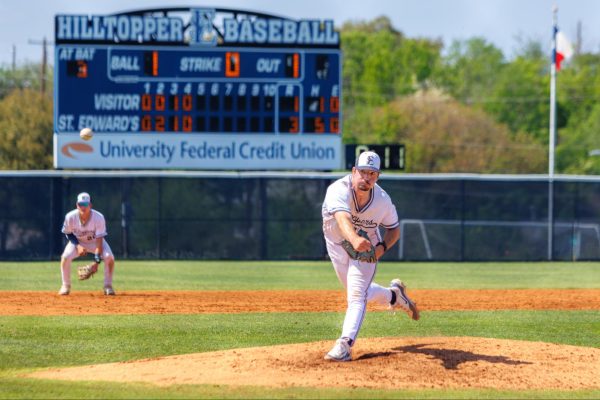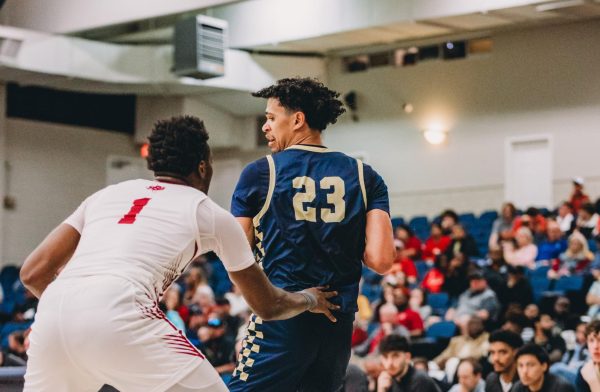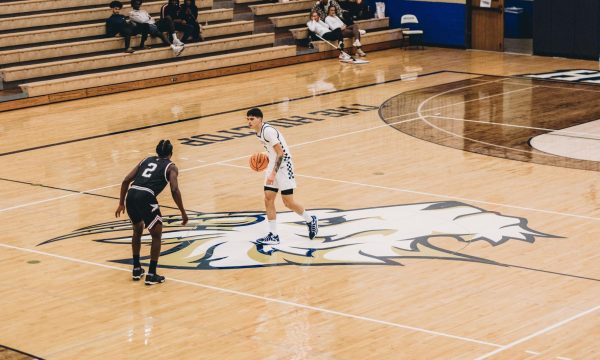Campus Recreation increases funds and fun
Students looking to get involved in athletics have a better outlet than ever before through St. Edward’s Campus Recreation.
An increase in Campus Recreation’s budget is helping fund more club sports and intramural events on campus. Yet some club sports are still hard-up for money and have to pay a portion of their operating expenses from player dues.
Club sports are student-run organizations that involve athletic activity, and several club sports compete in regional leagues against other colleges and universities.
“This year has been a stark contrast to last year,” said Campus Recreation Coordinator Andy Lemons. “We definitely exist on campus.”
When Lemons first arrived at St. Edward’s in 2009, there were only four club sports active on campus. A mere two years later, 17 club sports are now up and running, and new intramural events like Battleship LIVE — which has been rescheduled for next semester — and one-night video game tournaments have given students diverse opportunities to exercise and compete in the spirit of fun, friendly competition.
Club sports figures to benefit the most from the budget increase, as the Campus Recreation budget for club sports is now double that of last year.
The budget increase allows Lemons to give more funds to club sports to help cover league fees and uniforms. This boost in funding has helped club sports manage their costs and keep dues low. However, teams are still required to use their dues to pay for coaches, Lemons said.
Despite the budget increase, Men’s and Women’s Lacrosse are still struggling to make ends meet, said senior Jamie Aldridge, president of women’s lacrosse, and Vinny Caruso, president of men’s lacrosse.
“It’s a constant struggle with money,” Aldridge said. “We really don’t have a lot to work with, but we try to make it each year.”
Because Men’s and Women’s Lacrosse do not have a varsity counterpart at St. Edward’s, the teams work especially hard to represent St. Edward’s in a positive light wherever they play, Caruso said.
“We do respect what the university has given us so far, but we just want them to respect us more and realize we represent the university,” Aldridge said.
Despite the fact that both lacrosse teams desire more funds, both representatives have seen a definite increase in support from the Hilltopper student body. Men’s lacrosse achieved the previously unthinkable last year when they were granted permission to play a game on the upper soccer field for homecoming week against Texas A&M University.
The new programs allow students who want to be part of an athletic team–excluding the varsity level–to participate and compete against other universities.
Junior Ian Peoples is not alone in his decision to participate in club sports over varsity sports. Peoples spent his first two years at St. Edward’s competing on the varsity soccer team. This year, he decided to join the men’s club soccer team and notices a huge difference between the two.
“It’s a lot different than playing for the school,” Peoples said. “We still want to win, we still want to do good, but it’s not the end of the world if we don’t.”
Lemons aims to help students get socially involved on campus, and his goals stretch even beyond graduation. He hopes to promote healthy lifestyle habits through Campus Recreation that will benefit both current and graduated St. Edward’s students.
“We want to provide recreation opportunities for the general student body to make sure they are also taking care of their bodies,” Lemons said.
Another change afforded by Campus Recreation’s increased budget are the Group X classes that are offered 11 times a week for $25 a semester. These classes were previously offered at no cost, but the added fee will be used to pay Group X staffers and will enhance the quality of the classes.
“Our club programs and fitness programs have been off the wall, and that has been great,” Lemons said.
Club teams seeking school funding must first go through a one-year provisional period to show that they are stable organizations. Clubs must prove to both Student Life and Campus Recreation that there is genuine interest in the activity. The organization must then submit a budget to Campus Recreation, who determines where the club needs assistance.
For example, last year Women’s Club Soccer was without funding at the provisionary level, making “it hard to have practice because people didn’t show up and there was nothing for them to compete for,” said Women’s Club Soccer team captain Nicole Wellman.
Now that the team is classified as competitive and funded by the school, “we have that sense of team we didn’t have last year,” Wellman said.
As opposed to last year’s single-game ‘season,’ women’s soccer will compete in a regular season with eight games throughout Texas this fall.
With the continued growth of Campus Recreation students can expect to see additional teams on campus, as two more club sports are in the works.
“The first two weeks of school have been crazy with the number of kids coming in and out compared to last semester,” Lemons said.






